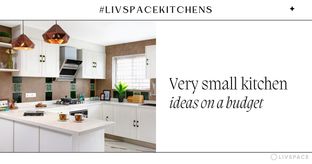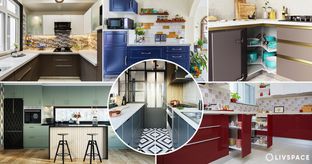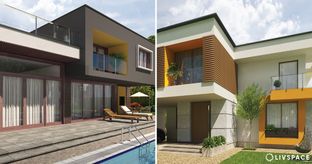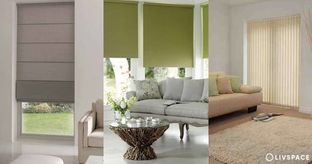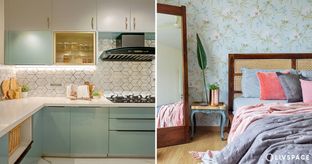In This Article
- #1: I want to know which are some of the essential features of an Indian kitchen?
- #2: Do I really need a modular kitchen and is it suitable for Indian cooking?
- #3: Which type of kitchen cabinets are best for Indian homes?
- #4: I am confused about kitchen layouts. Are open kitchens good for Indian homes?
- #5: Since Indian cooking is extensive, what kind of wood is suitable for our kitchens?
- #6: I have a really small kitchen. So I wanted to know what is the standard size of an Indian kitchen?
- #7: What appliances must I have in my kitchen for staple Indian cooking?
- #8: If I want to cook full pot Indian meals, what kind of finishes and colour scheme should I choose?
- #9: Do Indian kitchens need open storage?
- #10: How can I reduce the cost of my modular kitchen?
- PRO Tip: How can I design a Vastu-friendly kitchen?
Are you daydreaming about the squeaky clean kitchens you see in fancy interior catalogues of foreign magazines? Well, who doesn’t! But the truth is: cooking in our desi households is a whole different ball game from the typical Western setups. Thus, our kitchens must account for our culinary habits. And Indian style kitchen design has its own rules.
To put it bluntly, you need an Indian style kitchen design to ensure that your ‘chounks’ and ‘tadkas’ don’t do any permanent damage! We are sure you have many questions; so do several other people who are beginning to think about their new kitchen design.
#1: I want to know which are some of the essential features of an Indian kitchen?
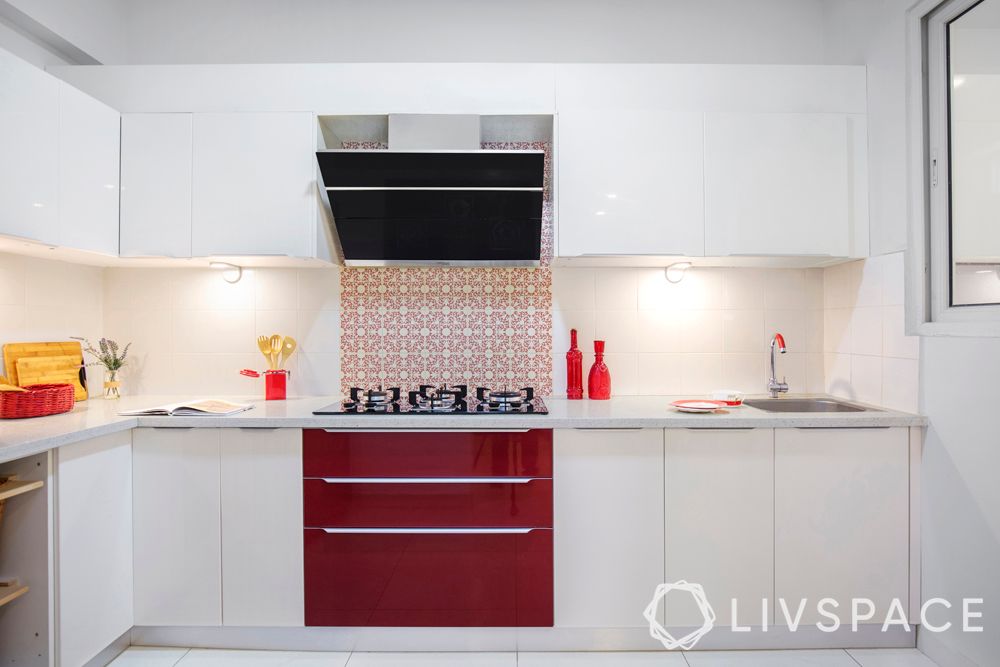
Every Indian kitchen needs a very strong chimney to keep all the strong smells of ingredients accompanied by oil and smoke away. Another example of an Indian style kitchen feature would be to have 2 sinks because it’s more convenient.
To explore all the essentials features of a desi kitchen, click here.
#2: Do I really need a modular kitchen and is it suitable for Indian cooking?
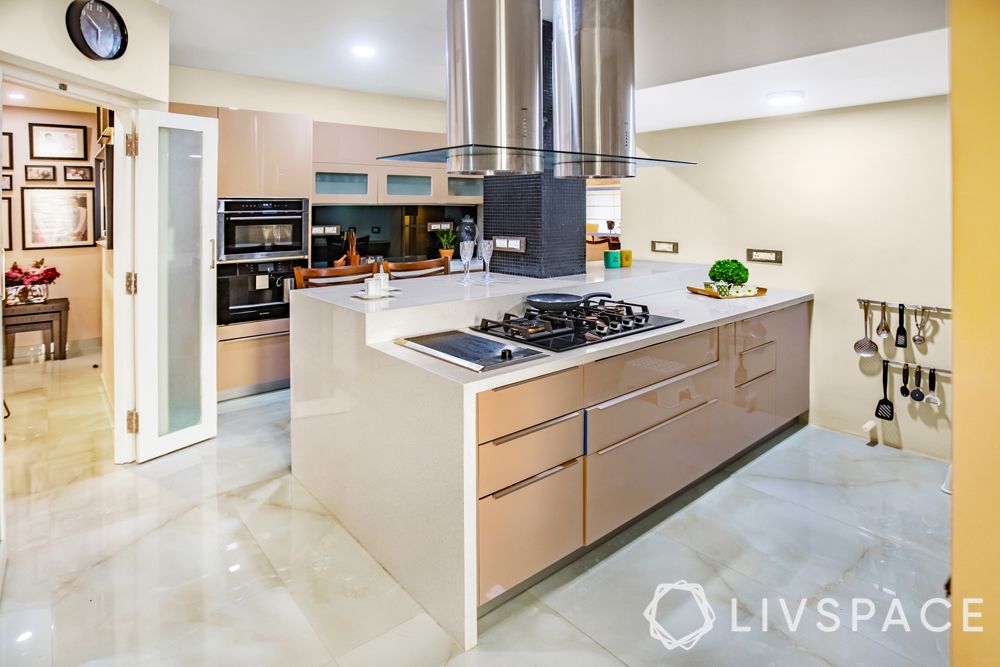
To be honest, modular kitchens are relatively new to the Indian market. Ever noticed how we use the term ‘modular kitchens’ only with reference to India? This is because in most Western countries, all kitchens are by default modular.
Now coming to the question of whether Indian homes need modular kitchens; the answer is yes! The primary reason for this is that modular furniture makes your kitchen efficient and saves time. Thus, to sustain our busy modern lives, we need modular kitchens. Moreover, modular kitchens can be installed faster and moved from one home to another if required. And don’t forget all the accessories you can install to make your life easy!
Still not convinced? Get a complete analysis of every aspect of modular kitchens here. Also, don’t forget to read this if you want to understand the difference between modular and carpenter-made kitchens.
#3: Which type of kitchen cabinets are best for Indian homes?
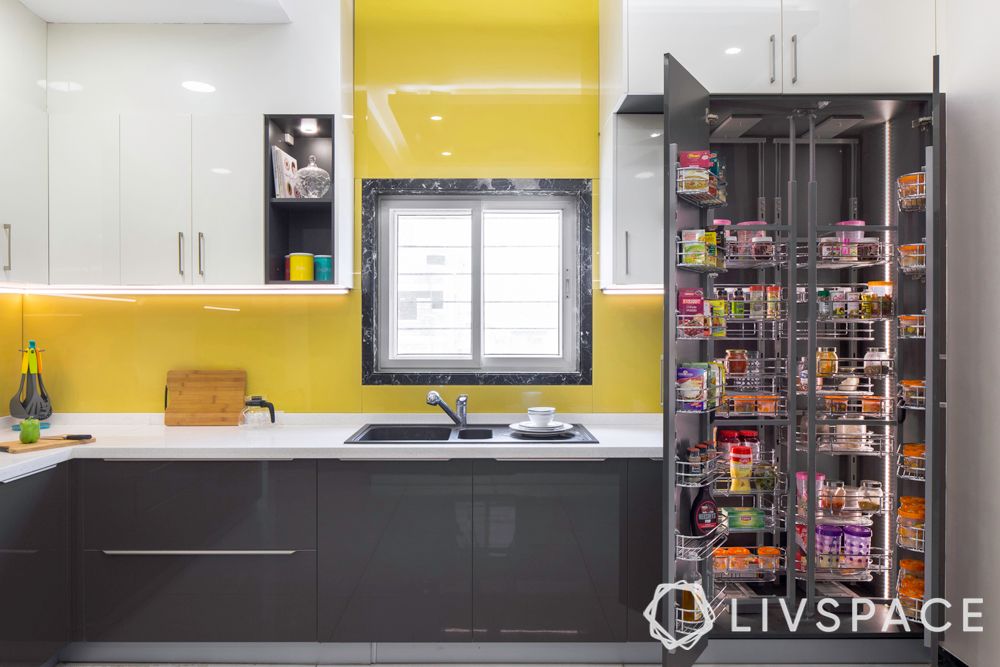
The cabinets in a kitchen can be segregated into three categories depending on their location — base cabinets, wall cabinets and lofts. Based on size, they can be divided into normal cabinets, tall cabinets and mid-tall cabinets. As per functional requirements or opening mechanisms, they can be classified into roller shutter units, lift up cabinets and various others; you can get a complete list here.
In any Indian style kitchen design, any combination of these cabinets can be used to provide optimum storage. It really depends on the way you use your space. However, most designers agree that every kitchen should have a tall unit with a pantry pull-out accessory. Want to know why? Find out why every kitchen needs a tall unit here.
#4: I am confused about kitchen layouts. Are open kitchens good for Indian homes?
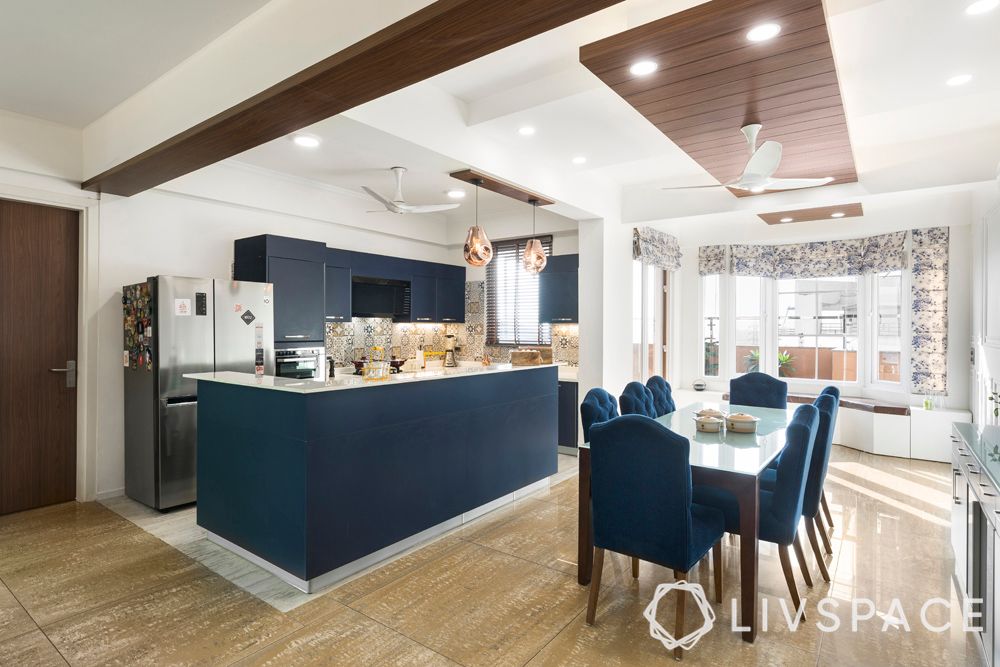
To clear a common confusion, layout here does not mean the shape of your kitchen. It refers to whether you have an open or a closed kitchen. Traditionally, Indian kitchens were always closed. And one might be tempted to think that closed kitchens are better for desi homes with all our flamboyant cooking. However, both open and closed layouts have their own pros and cons. It depends on your priorities and lifestyle choices.
To know more about if open kitchens are suitable for Indian homes, click here.
#5: Since Indian cooking is extensive, what kind of wood is suitable for our kitchens?
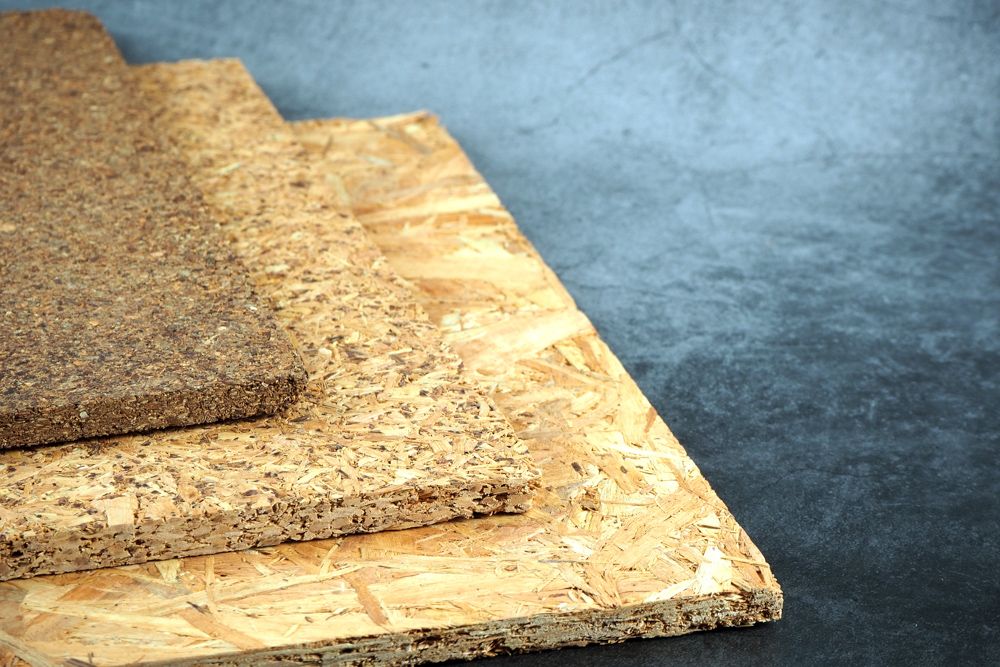
To begin with, solid wood kitchens cabinets are not very common in India. Firstly because it is very expensive; secondly, it requires a phenomenal amount of maintenance. What we see instead is the use of plywood with a range of finishes. Typically, BWR (boiling water resistant) plywood is used for the wet zones in the kitchen. For the rest, any other variety of engineered wood or plywood can be used. The quality and properties of the plywood determine the cost and durability of the kitchen.
For a detailed account of all wood and wood-like materials used in an Indian style kitchen design, click here.
#6: I have a really small kitchen. So I wanted to know what is the standard size of an Indian kitchen?
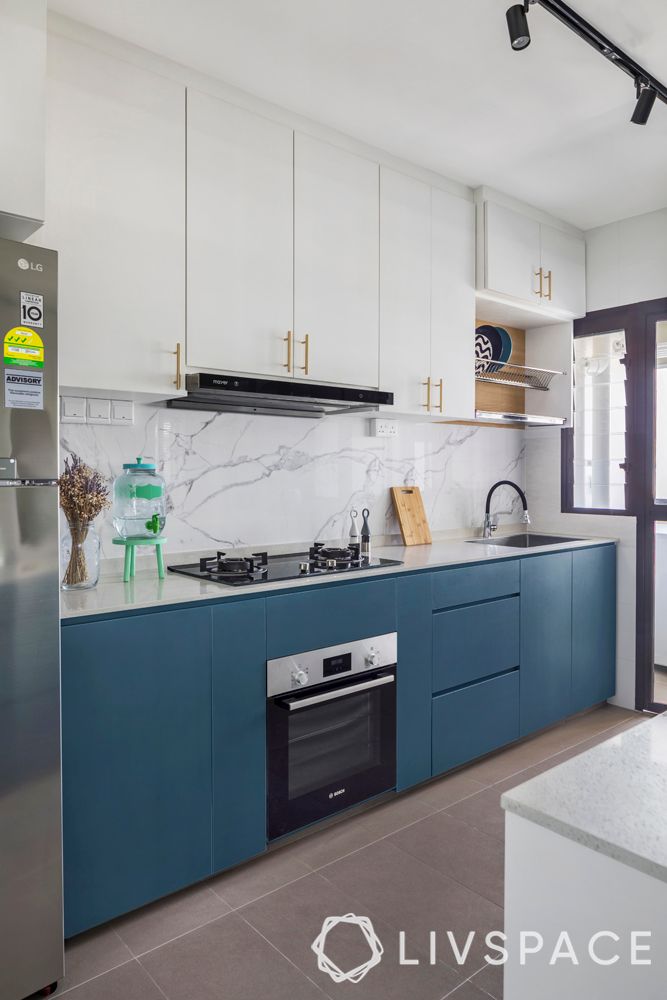
The size of a kitchen can vary from 6 X 6 sq ft to almost any dimension depending on the need of a family or individual. However, 8X 10 sq ft is the lowest comfortable size for a kitchen with a moderate amount of storage space.
If you are struggling to fit everything into a small kitchen, try some of these tricks to make the most of it!.
#7: What appliances must I have in my kitchen for staple Indian cooking?
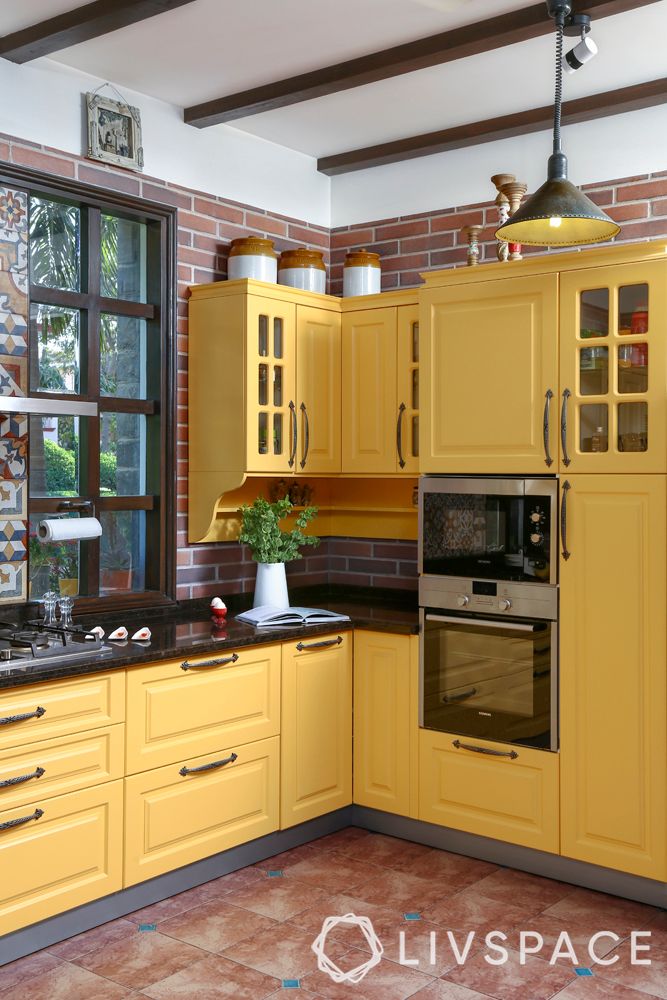
As mentioned in response to the first question, chimney is a must in any Indian style kitchen design. Moreover, an over or a microwave (in some cases both) have become staples in any kitchen these days. The choice is to either create hollow open cabinets for them or have inbuilt appliances. The hob too can either be inbuilt or placed separately. Inbuilt appliances look more seamless and are space-efficient.
Appliances like dishwashers are not exactly indispensable for Indian kitchens as most people have household help to do dishes. Other appliances like air-fryer, mixer-grinder etc. can be placed inside tambour units (with roller shutters).
Here’s your checklist of essential kitchen appliances for any Indian kitchen.
#8: If I want to cook full pot Indian meals, what kind of finishes and colour scheme should I choose?
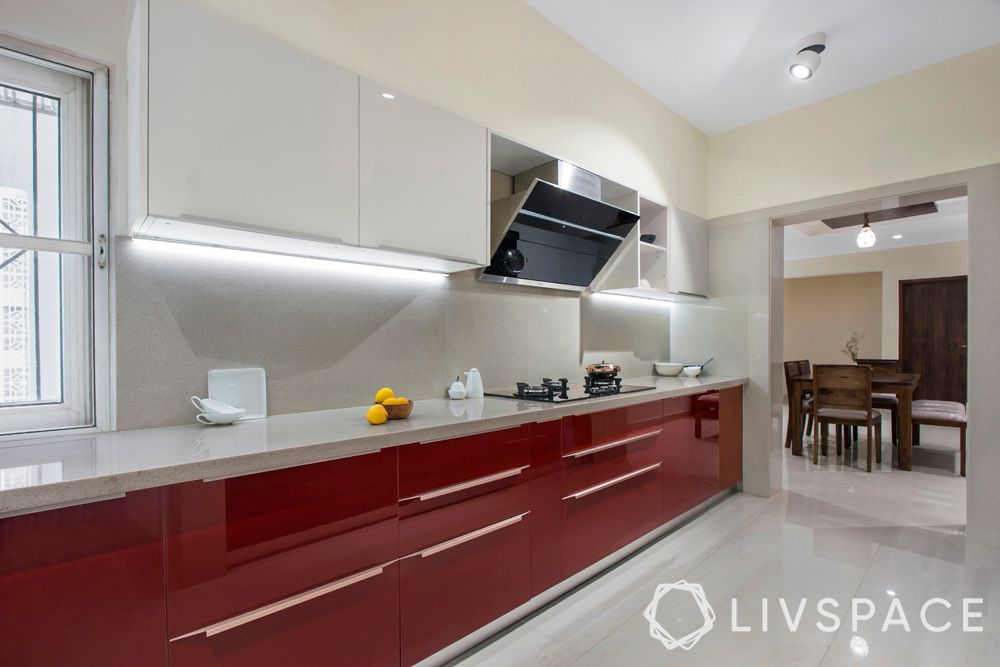
‘Finish’ is basically the outermost layer of your kitchen cabinets. Typically, you would choose the finish depending on how you use your kitchen.
- If you have a hired cook, you might want to stick with laminate finishes that are affordable and easy to clean.
- Won’t use your kitchen extensively? Membrane is ideal for a seamless look and a kitchen does not get used too much.
- Acrylic, the most expensive finish, has a glossy look and is extremely easy to clean.
Take a look at the master guide for kitchen cabinet finishes before you choose.
While we have refrained from recommending a finish for Indian kitchens, the same is not true for colours. Considering the affinity for curry stains and oil spills, it’s best for Indian kitchens to have dark coloured base cabinets. But if your kitchen is really compact, stick with neutrals or white.
And that’s our take on the colour schemes with Indian kitchen photos.
#9: Do Indian kitchens need open storage?
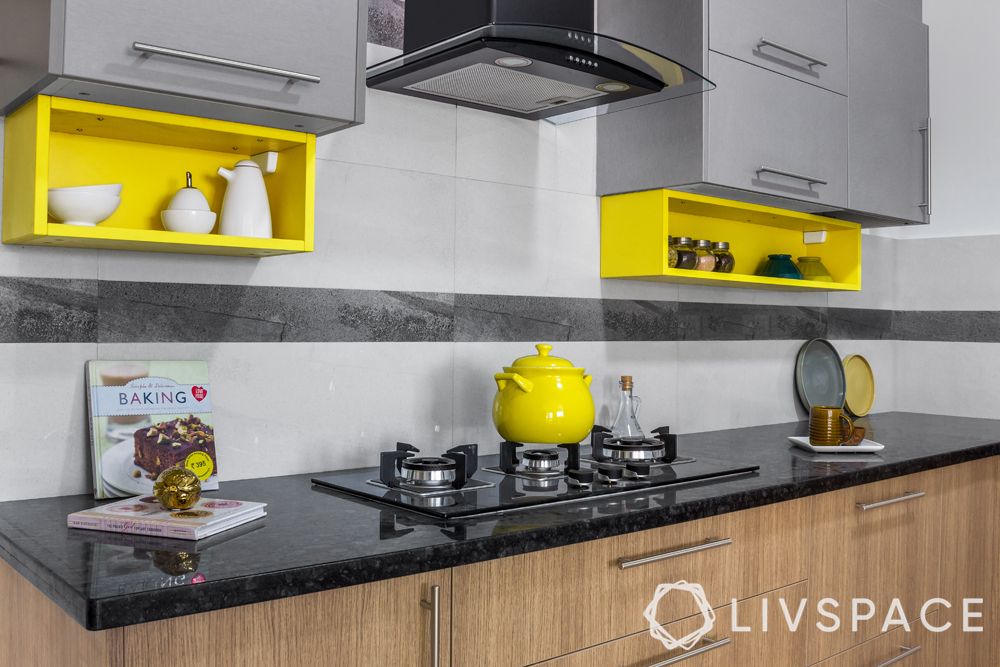
To a certain extent, whether or not you need open shelves depends on how you use your kitchen and how much you cook. You could take this quiz to find out. However, in a typical Indian kitchen, the spices used on a regular basis are above 10 in number. Considering we use so many spices in our food, it usually makes sense to have at least a few open shelves or spice racks.
To get the whole picture, do read a comparison between open and closed storage for kitchens.
#10: How can I reduce the cost of my modular kitchen?
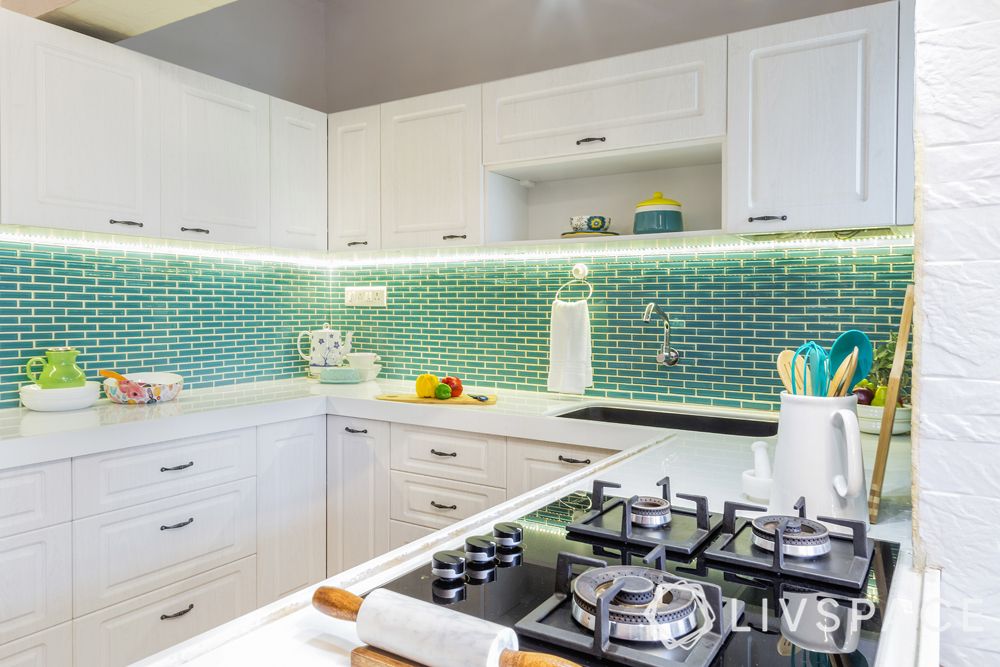
While we have established that modular kitchens are the norm now but that still does not change the fact that they come at a cost. So it is important to understand that a kitchen is a one time investment. So you can cut corners but only as long as it does not affect the durability of your kitchen.
For instance, particle board (a variety of plywood) is a very good material for kitchen cabinets. However, it cannot be used in the wet areas in the kitchen. So you can use particle board in the dry areas to cut down the cost of your kitchen.
For a list of such desi jugaads to reduce the cost of your kitchen, click here. You can find out what is the cost of hiring an interior designer to get your dream kitchen too!
PRO Tip: How can I design a Vastu-friendly kitchen?
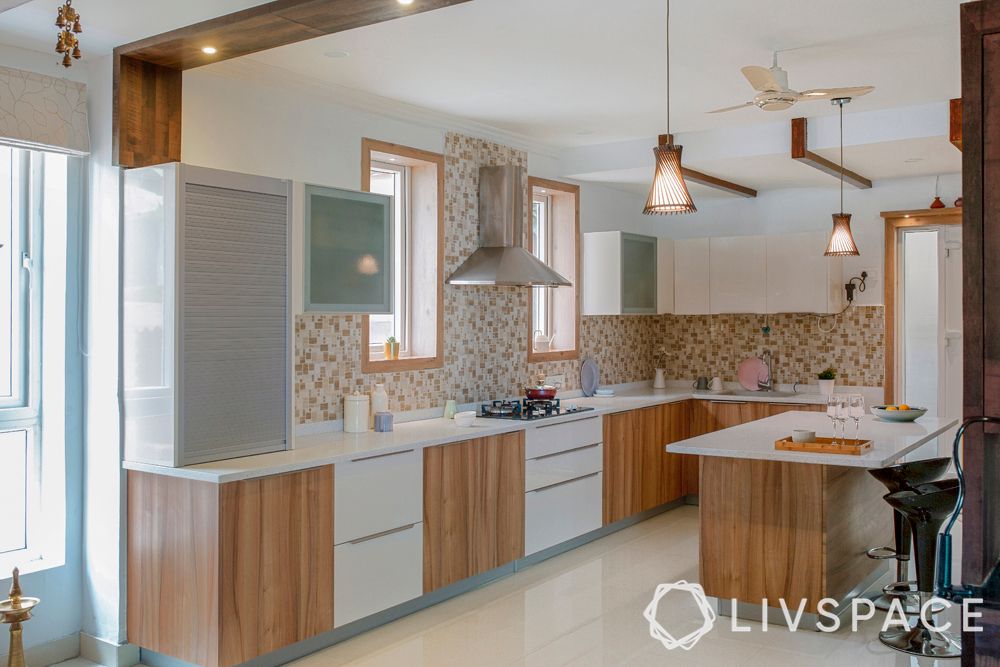
To sum it up, let’s give you one tip for good luck! Vastu or the science of energy in India governs various aspects of design. Particularly for the kitchen, the tenets of good Vastu are critical. So to get the Vastu of a Indian style kitchen design right, you must never place the kitchen sink next to the hob. Also, there must be windows in the kitchen to allow a free flow of energy. Moreover, the kitchen must never have a common wall with the bathroom, which is a low-energy zone.
For more vastu tips related to kitchen design, click here.
Send in your comments and suggestions to editor@livspace.com





